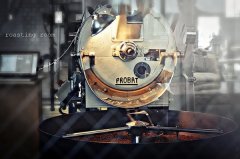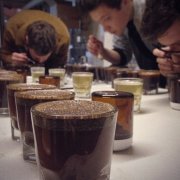Decaffein, the processing method of low caffeine coffee beans

The CO2 decaf treatment and other decaf treatments are described as follows:
At present, there are three ways to remove caffeine from coffee beans:
1. Water treatment can remove 9496% caffeine.
2, chemical extraction method, early use chloroform (Chloroform), benzene (Benzene) as the solvent to extract caffeine, later understand that these chemicals cause cancer, and gradually be replaced by other low-hazard chemicals, but after all, the chemical substances are not natural enough, this method can extract 96% of caffeine.
3. The third method is supercritical carbon dioxide treatment, and its extraction rate can reach 960.98%. The most efficient of the three ways to remove caffeine.
Carbon dioxide (CO2) treatment:
Two natural elements, pure water and carbon dioxide (a mixture of the two we often call soda) are used to extract caffeine from raw coffee beans. The founder of this method is Kurt Zosel.
In chemistry, we also call it supercritical CO2 extraction technology. The density of supercritical carbon dioxide (hereinafter referred to as SC-CO2) is hundreds of times that of gas and close to that of liquid, but its viscosity is similar to that of gaseous carbon dioxide. Its diffusion coefficient is about 1% of that of a gas and hundreds of times larger than that of a liquid. Therefore, the movement (Mass transfer) or distribution of substances is faster than that in liquid solvents.
This method was developed to extract caffeine from coffee beans because of the following characteristics:
1. The critical temperature of carbon dioxide is 31.1 ℃ and the critical pressure is 73 atmospheric pressure (Atm). It is suitable for the extraction of thermally unstable substances because it is close to the critical temperature at room temperature. It has a good effect on the retention of aroma substances in coffee.
two。 Carbon dioxide is an inactive gas, has no flammability and chemical reactivity, has no residue, is harmless to human body, and does not cause environmental pollution.
3. It is easy to obtain high-purity carbon dioxide and cheap.
The method of supercritical CO2 extraction of caffeine is to make coffee beans absorb water and expand to twice as large. Caffeine molecules move in the bean body, add carbon dioxide and give more than 100 atmospheric pressure (Atm) in the water, so that water and carbon dioxide are mixed to create a soda environment. Carbon dioxide attracts caffeine molecules like a magnet, and when caffeine is captured by carbon dioxide, caffeine begins to move. Carbon dioxide is highly selective and it does not capture carbohydrates and proteins in coffee beans because carbohydrates and proteins are the main components of flavor and smell in coffee beans. When it dries naturally after the extraction, caffeinated water can be easily separated from caffeine and used for other commercial purposes.
Advantages of this method:
1. The extraction efficiency of caffeine is very high, and there is no chemical pollution.
two。 It will not have any chemical changes with carbohydrates and proteins in coffee beans.
3. Its by-product (caffeine) is natural and 100% recyclable!
Important Notice :
前街咖啡 FrontStreet Coffee has moved to new addredd:
FrontStreet Coffee Address: 315,Donghua East Road,GuangZhou
Tel:020 38364473
- Prev

The flavor of shallow roasted coffee is sour and sweet.
Coffee always gives people a black and bitter stereotype, but in fact, it is like a fruit, sour and sweet. The diversity and variation of the flavor of the lightly roasted manor-grade boutique coffee is no less than that of red wine. You can feel rich fruit, flower and sweet aromas in a good cup of coffee noodles. I will definitely like this gradually after I try it.
- Next

Coe cup meter Osher Chinese version description coffee cup test
The cup testing system introduced by BGT and Osher Coffee Alumni Association in the past two years all use the CoE competition mode. At present, the fine bean competition in various countries uses either CoE or SCAA mode, up to 9 major coffee producing countries all use the Coe cup as the national competition mode, so we decided to promote the CoE cup testing system in Taiwan. The purpose of BGT is to let barista [know boutique coffee] and use his essence.
Related
- Beginners will see the "Coffee pull flower" guide!
- What is the difference between ice blog purified milk and ordinary milk coffee?
- Why is the Philippines the largest producer of crops in Liberia?
- For coffee extraction, should the fine powder be retained?
- How does extracted espresso fill pressed powder? How much strength does it take to press the powder?
- How to make jasmine cold extract coffee? Is the jasmine + latte good?
- Will this little toy really make the coffee taste better? How does Lily Drip affect coffee extraction?
- Will the action of slapping the filter cup also affect coffee extraction?
- What's the difference between powder-to-water ratio and powder-to-liquid ratio?
- What is the Ethiopian local species? What does it have to do with Heirloom native species?

